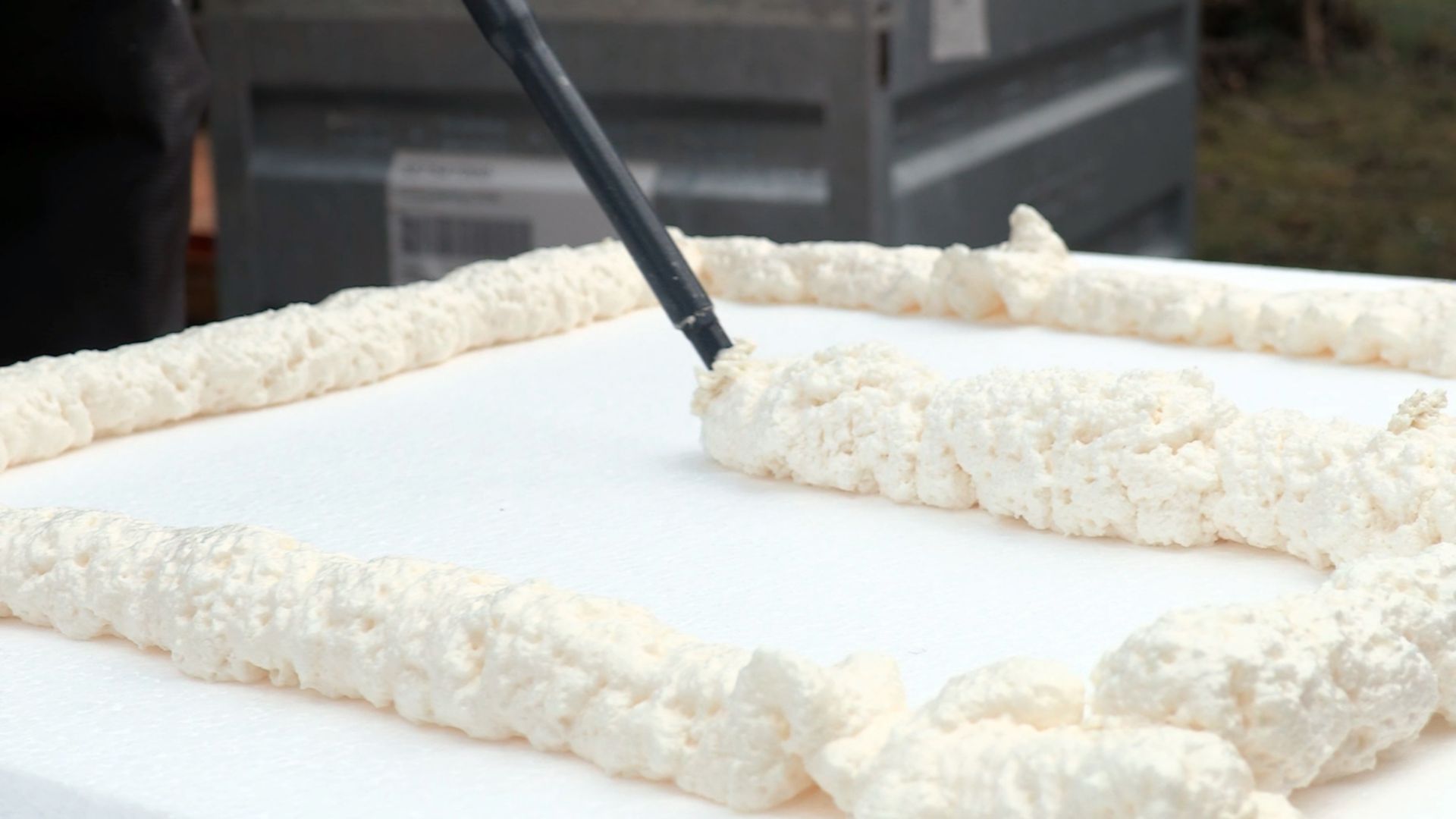09/11/2022
PU Foam is a polyurethane foam in spray foam type. They can be used for fixing, insulating and filling connection joints around window and door frames, pipe entries, air conditioning vents and roller blind housings and filling large cavities, fill and insulate against noise, cold, and drafts and waterproof, easy to apply with nozzle valve, can be cut, sanded and over painted. The foam texture looks like a mousse and cure in contact with moisture when applied. Therefore, PU foam is widely used in both construction and DIY. Below you can learn more about their properties and preparation and application process.
Preparation
PU foam canisters must be shaken sufficiently before use. We recommend at least 20 times to ensure that the viscous prepolymer and the blowing agent in the canister are well mixed. This creates a homogeneous compound and the product develops its optimum application properties. If you have a longer break between applications, shaking should be repeated.
Curing of one component PU foams occurs through a reaction with moisture from the environment (air) and the substrate. The applicator should ensure that sufficient moisture is present for the PU foam to cure properly. Only when the foam cures properly, it is able to provide very good insulation values. For this reason, it is in general advisable to pre-dampen the substrate.
However, there are also a few types of foams which must not be pre-dampened:
- 2-component foams must not be pre-dampened
- Foam adhesives are less sensitive in regard to pre-dampening and do generally not need it
- Protective clothing: As the foam is very sticky, gloves should be worn during processing and safety goggles should be worn to protect the eyes.
- Good ventilation should also be ensured during the entire work process.
- Foam canisters must be held with the valve pointing downwards during application. Only in this way can the canister be emptied properly.
Application
PU foam adheres to all common construction materials. However, the following should be kept in mind:
- The surfaces must be solid, clean, and free of dust and grease.
- PU foam does not adhere well to materials such as silicone, oils and greases, polyethylene, or Teflon®.
In case of pressure sensitive applications (e.g. window or door frame installation) a product with a low curing pressure should be selected.
You can usually proceed with cutting excess foam after a rather short waiting time. Check the cutting time of the product on the canister or on the PDS. This gives you an indication of how long it takes.
Nevertheless, the foam may not be fully cured after this time. The foam is generally fully cured within 12-24 hours.
Properties
One of the great advantages of PU foam is its very short curing time. After only a short time, the material is cured and can be cut. PU foam also impresses with its very good thermal insulation properties. It can be easily painted or plastered over. Cured foam does not rot and is very resistant to external influences in general.
Yes, because the thermal conductivity is about 0.04 W/mK. This corresponds approximately to the figure for an XPS or EPS insulation board.
We recommend a storage temperature of between +5 °C and +25 °C. Protect the can from direct sunlight and temperatures above +50 °C (danger of explosion).
Cured PU foam is resistant to temperatures of between –40 °C and +80 °C. This means it can withstand such temperatures for a long period of time. The foam can even be exposed to temperatures of up to +100 °C for a short period without suffering any damage.
1-component foams cure with the moisture from the air and the substrate.
2-component foams do not require additional moisture for curing. Curing is achieved by a chemical reaction of two substances which are mixed in the canister before use or during application. Such foams usually achieve higher strength and cure much faster.

